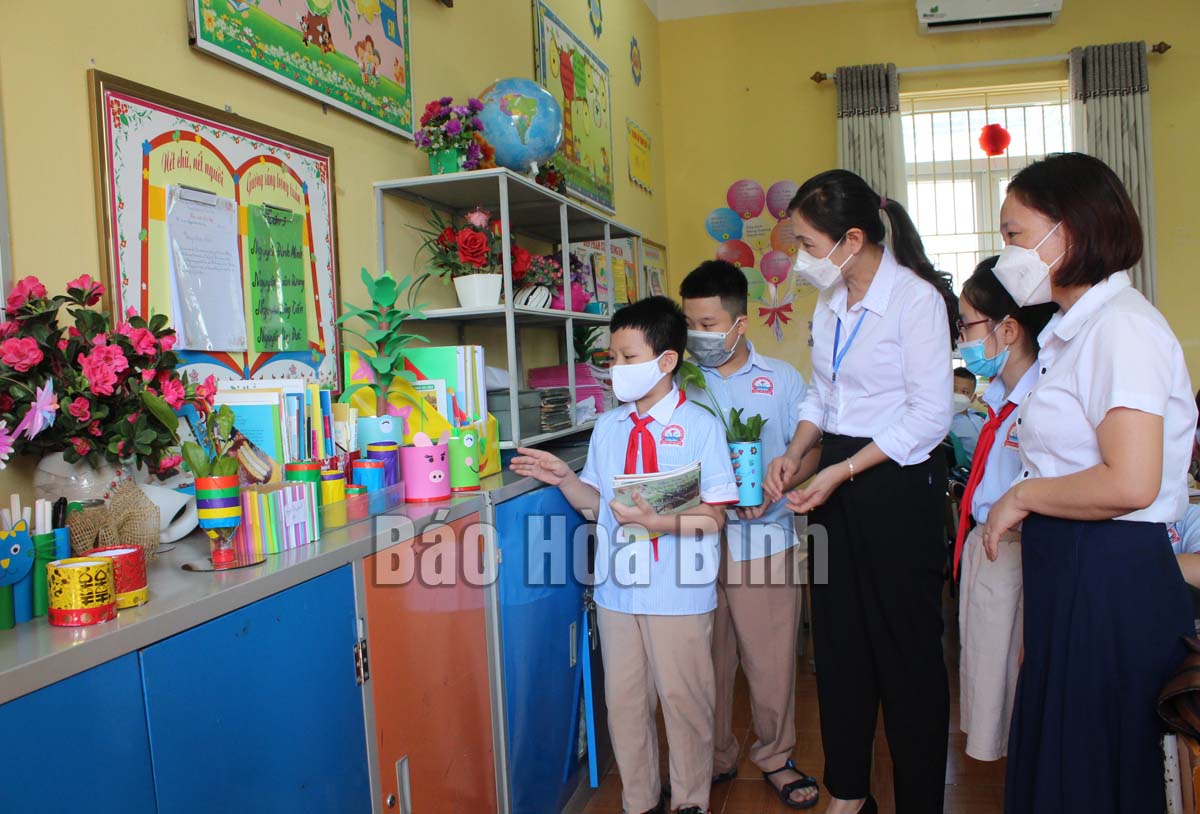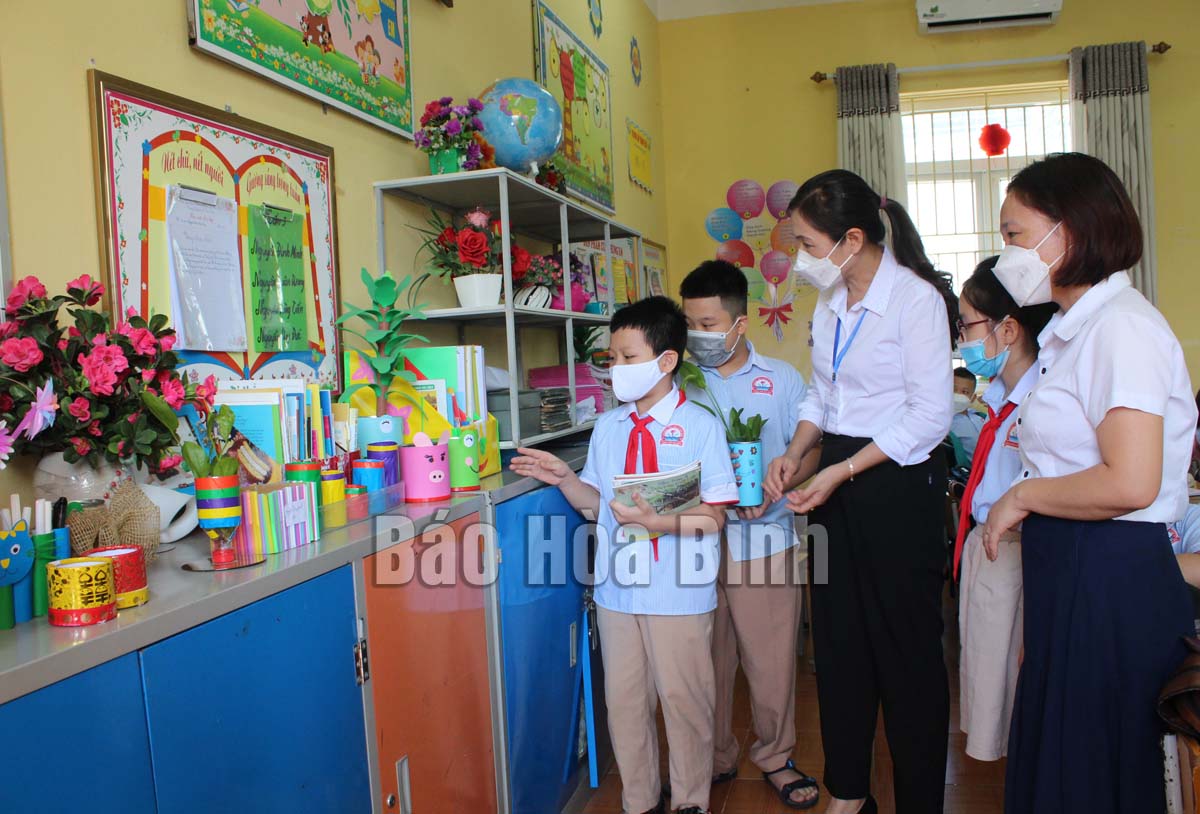(HBO) – The Le Van Tam Primary School in Hoa Binh city is assessed as a leading primary education establishment in Hoa Binh province. In the 2020 - 2021 academic year, it won the first prize in the contest on creating "safe, creative, and effective” school spaces. The competition for primary schools was launched by the provincial Department of Education and Training.
Creativity corners made by
students help build lively educational spaces to improve learning
effectiveness. The photo was taken at the Le Van Tam Primary School (Hoa Binh
city).
Ha Ngoc Lan, Principal of the Le Van Tam Primary
School, said despite a modest area, the campus is always full of greenery and
interesting experience corners. To give students such a safe, creative, and
effective learning space, school leaders and teachers have made use of every
vacant space on walls and along corridors to fill the school with greenery and
creative ideas.
Each classroom is also a vivid space decorated
by students, bringing about surprising and interesting outcomes, she noted.
Last academic year, 31 primary schools in Hoa
Binh city took part in the contest on building "safe, creative, and effective”
school spaces.
Meanwhile, others in disadvantaged areas are
also making efforts to build a "safe, creative, and effective” educational
environment. Thanks to the support from students’ families, the Da Phuc Primary
School (Yen Thuy district) has managed turn itself into a colourful space where
students can play together and enjoy themselves at their will during playtime
and after school. At the Ba Khan Primary School (Mai Chau district), teachers
have put their wholehearted effort into creating an attractive corner of folk
culture, hoping to infuse patriotism and the love for the nation’s cultural
identity into pupils.
The competition on building "safe, creative, and
effective” school spaces was launched by the provincial Department of Education
and Training in the 2020 - 2021 academic year, aiming to encourage schools to
create a safe, friendly, and attractive educational environment for primary
students. It attracted the participation of schools across the province,
involving a large number of their pupils, teachers, staff members, and
managers, as well as support from authorities, organisations, and students’
families.
This contest is viewed as a practical and
effective solution to help better the use of school spaces and also an answer
to the improvement of school infrastructure amid limited resources, thereby
helping to better the quality of comprehensive education in primary schools.



